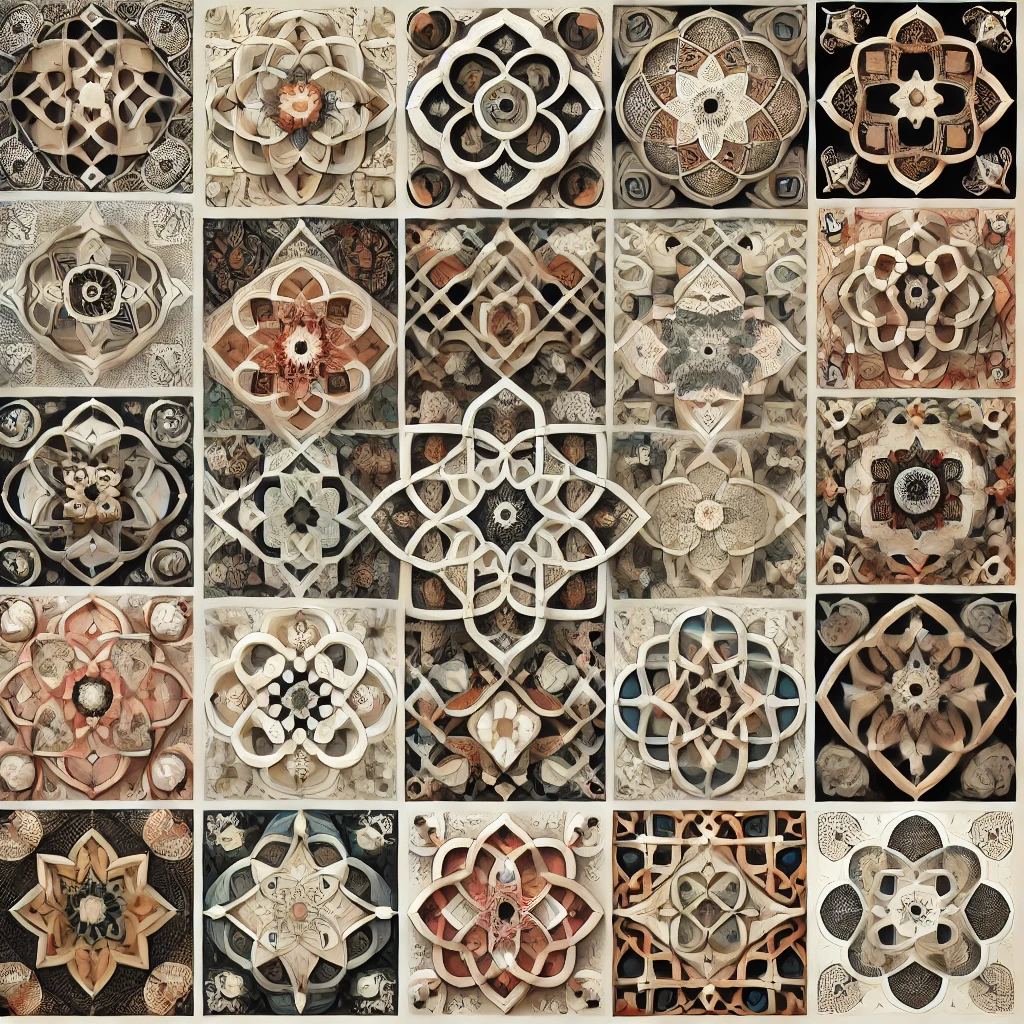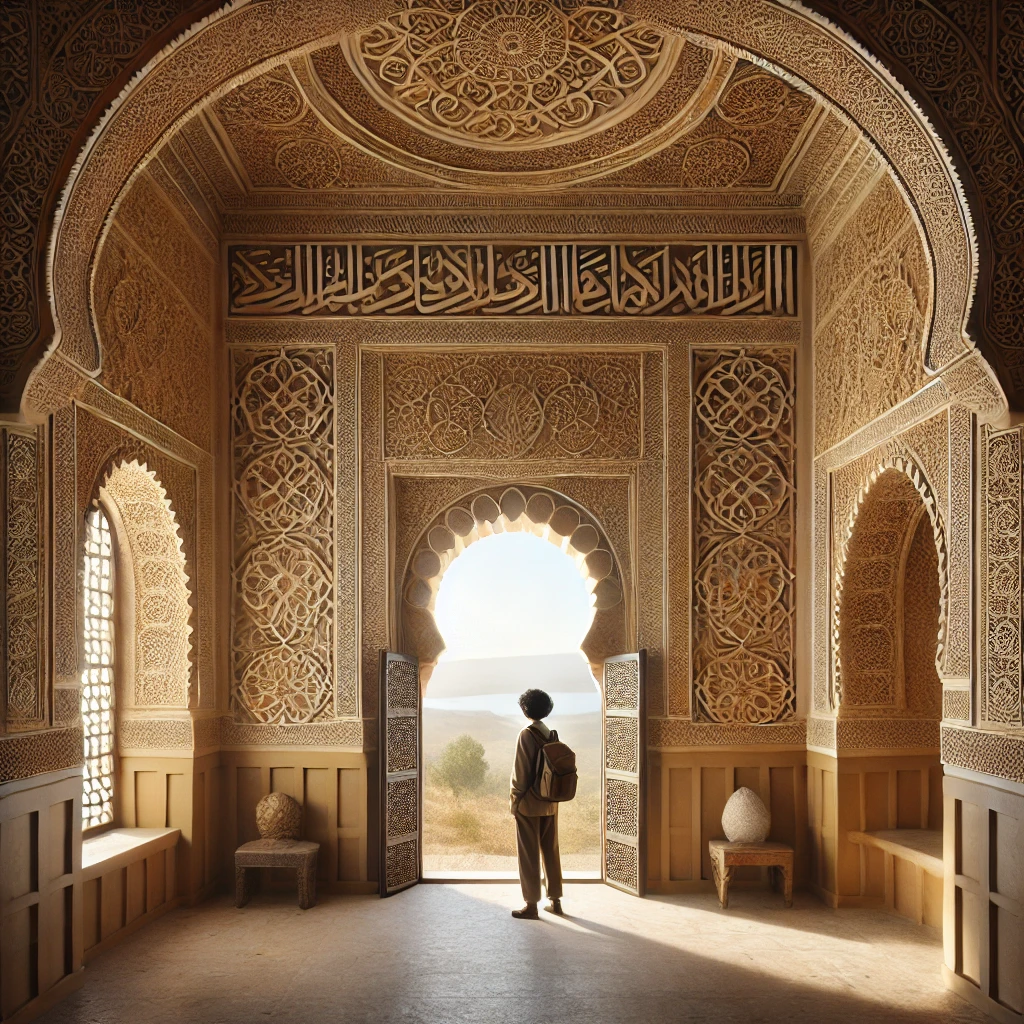ChatGPT:
Origin, History, and Development of the Alhambra
Origins (9th–11th Century)
The Alhambra in Granada, Spain, began as a small fortress built on the Sabika Hill during the 9th century. Its location provided a strategic vantage point for defending the city and controlling the surrounding plains. Archaeological evidence suggests that earlier Iberian and Roman settlements may have existed on the site before the construction of the fortress.
In the early 11th century, during the Zirid dynasty, Granada became an important Muslim kingdom, and the fortress was expanded to serve as a military stronghold. However, its transformation into a royal palace complex began later under the Nasrid dynasty.
Nasrid Dynasty (1238–1492)
The Alhambra’s golden age began in 1238 when Muhammad I ibn al-Ahmar, the founder of the Nasrid dynasty, made Granada his capital. He began converting the fortress into a royal residence, establishing the foundation for what would become an architectural masterpiece.
Subsequent Nasrid rulers, especially Yusuf I (1333–1354) and Muhammad V (1354–1359, 1362–1391), expanded the complex, creating its most iconic features:
• Nasrid Palaces with intricate stucco work, arabesques, and colorful tile mosaics.
• The Court of the Lions, symbolizing paradise with its 12-lion fountain.
• Generalife Gardens, serving as a summer retreat with terraces and water features.
The Alhambra reflected the Islamic worldview, emphasizing symmetry, geometric patterns, and the use of water to symbolize purity and tranquility. It functioned as both a political center and a representation of heavenly perfection.
Christian Reconquista and Renaissance Influence (1492–18th Century)
In 1492, the Catholic Monarchs Ferdinand II of Aragon and Isabella I of Castile captured Granada, marking the end of Islamic rule in Spain. They took possession of the Alhambra, preserving much of its Islamic architecture but also adding Renaissance and Christian elements:
• A church replaced the former mosque.
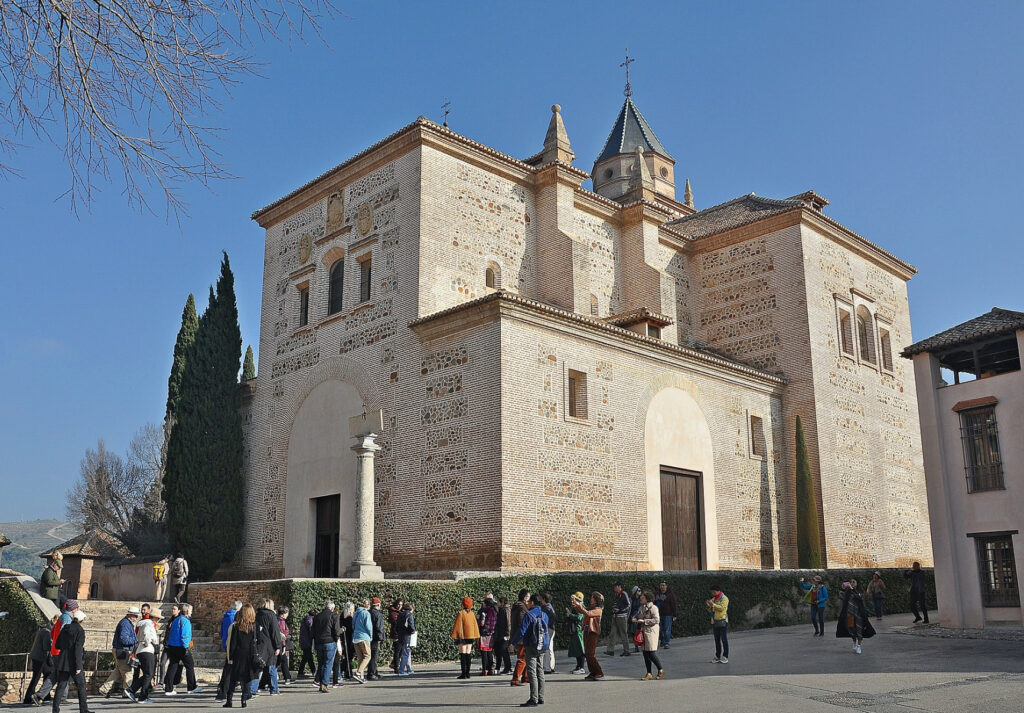
• Charles V built a Renaissance palace (1527) within the complex, a stark contrast to the Moorish style.
During this period, parts of the Alhambra fell into disrepair, though it remained a symbol of Spain’s layered cultural heritage.
Modern Rediscovery and Preservation (19th–20th Century)
By the 19th century, the Alhambra had suffered neglect, vandalism, and partial destruction due to earthquakes. However, interest in its beauty was revived by writers like Washington Irving, whose book “Tales of the Alhambra” (1832) captured the imagination of readers worldwide and sparked preservation efforts.
Extensive restoration projects began in the 20th century, ensuring the preservation of its intricate details. Today, it is a UNESCO World Heritage Site (designated in 1984) and one of Spain’s most visited landmarks, attracting millions of tourists annually.
Conclusion
The Alhambra’s history reflects the rise and fall of Islamic Spain, the Christian Reconquista, and the blending of cultures. Its evolution from a fortress to a royal palace and then to a modern heritage site highlights its enduring significance as a symbol of architectural brilliance and cultural exchange.
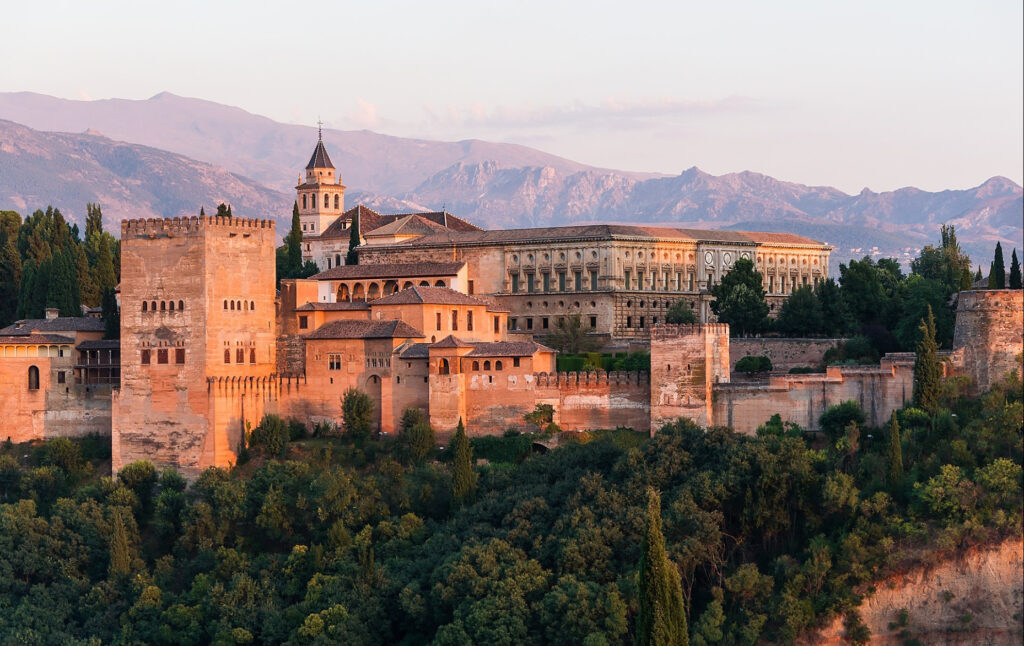
Architectural Influences, Specific Features, and Highlights of the Alhambra
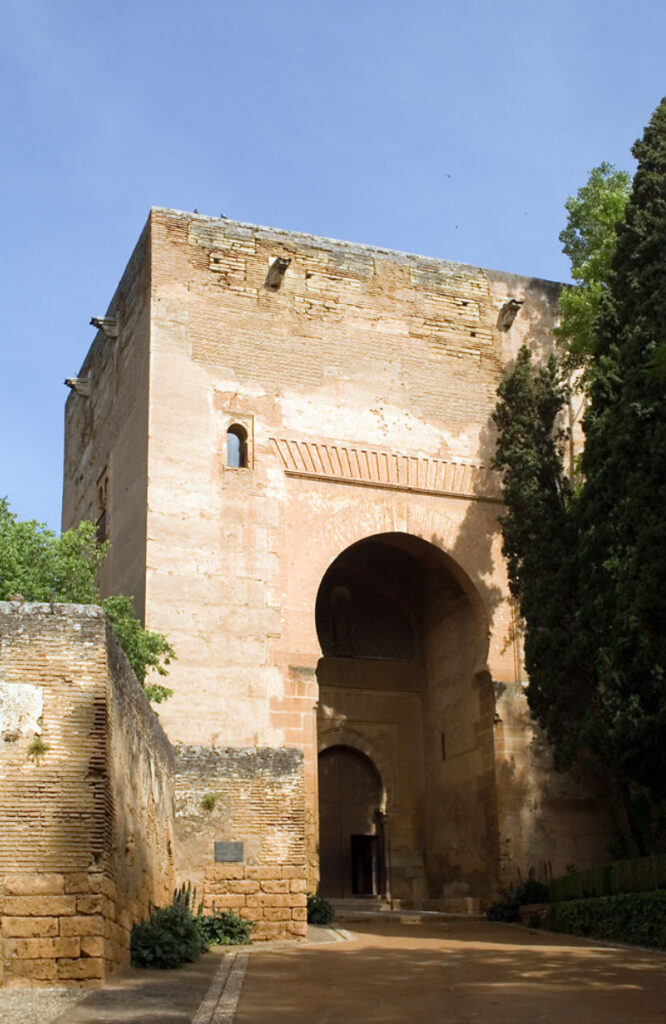
Architectural Influences
The Alhambra’s architecture is a masterpiece of Islamic art and Moorish design, influenced by Arabic, Berber, and Andalusian traditions. Key influences include:
• Islamic Geometry and Symmetry – Reflecting divine perfection and harmony.
• Persian and Islamic Gardens – Emphasizing water features, shade, and tranquility to symbolize paradise.
• Arabic Calligraphy and Inscriptions – Verses from the Qur’an and poems celebrating beauty and eternity.
• Roman and Renaissance Elements – Added after the Christian conquest, blending styles and eras.
The Alhambra reflects the Nasrid dynasty’s focus on intricate decoration, with a deliberate use of modest materials like plaster and wood transformed into stunning patterns, showcasing technical brilliance over opulence.
Specific Features
1. Nasrid Palaces
• Mexuar Hall – A reception area for official ceremonies, combining Islamic patterns with later Christian influences.
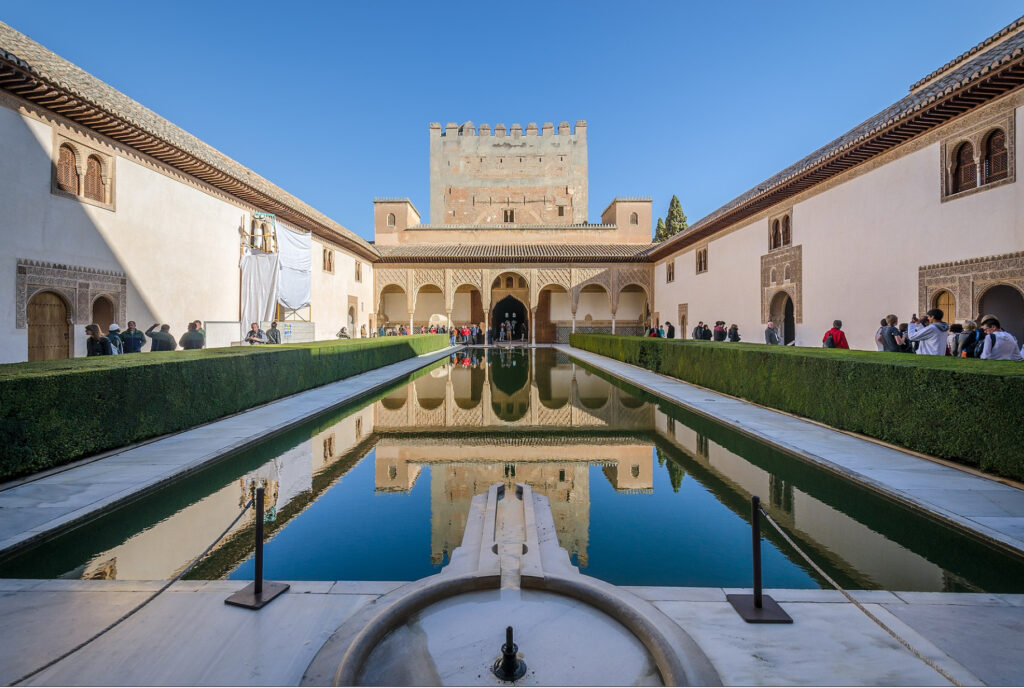
• Comares Palace – The royal residence featuring the Hall of the Ambassadors, known for its domed ceiling symbolizing the heavens.
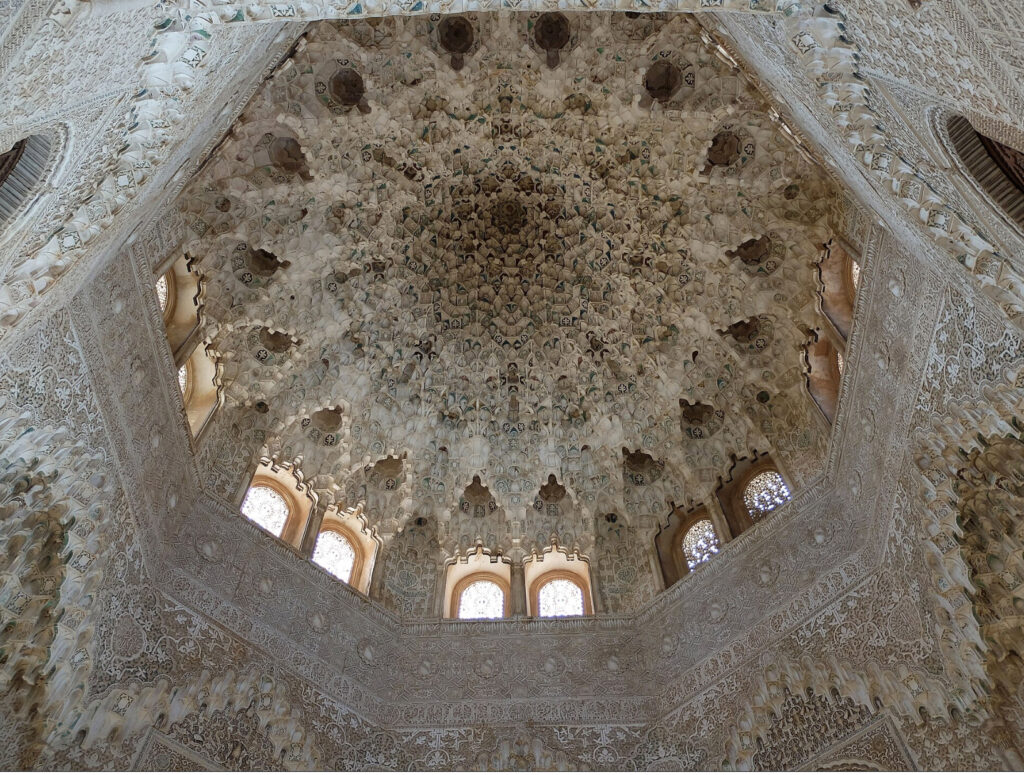
• Palace of the Lions – The highlight of the Nasrid Palaces, famous for its Court of the Lions and the fountain supported by 12 marble lions, symbolizing power and paradise.
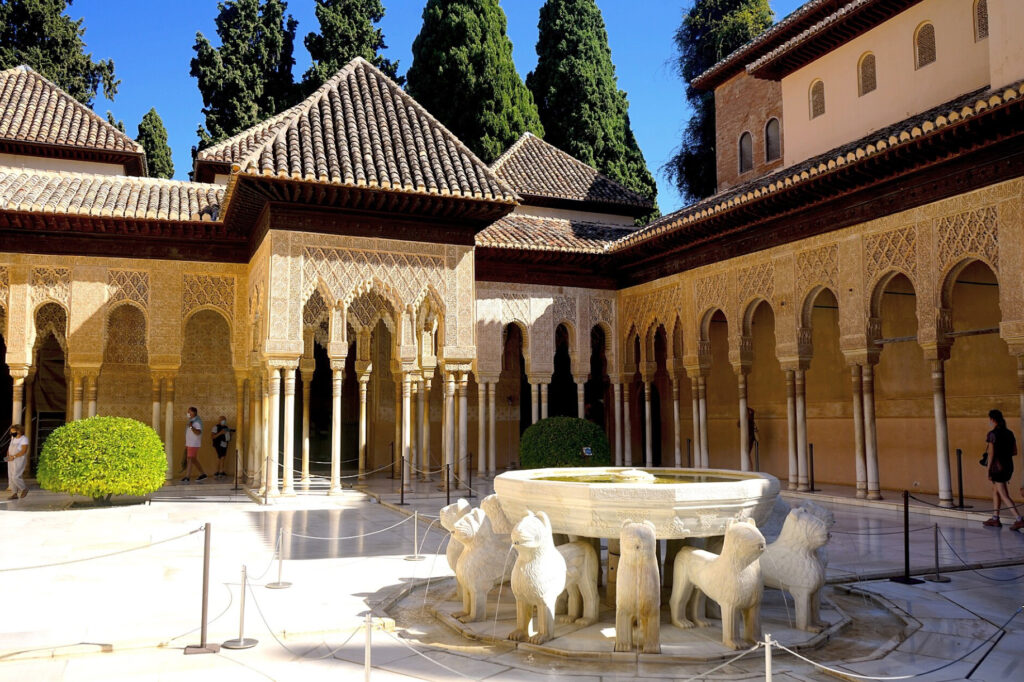
2. The Generalife Gardens
A summer palace and leisure retreat, located outside the main fortress walls.
• Features terraced gardens, pools, and fountains, designed for relaxation and contemplation.
• Reflects the Islamic concept of Jannah (paradise) with lush greenery and flowing water.
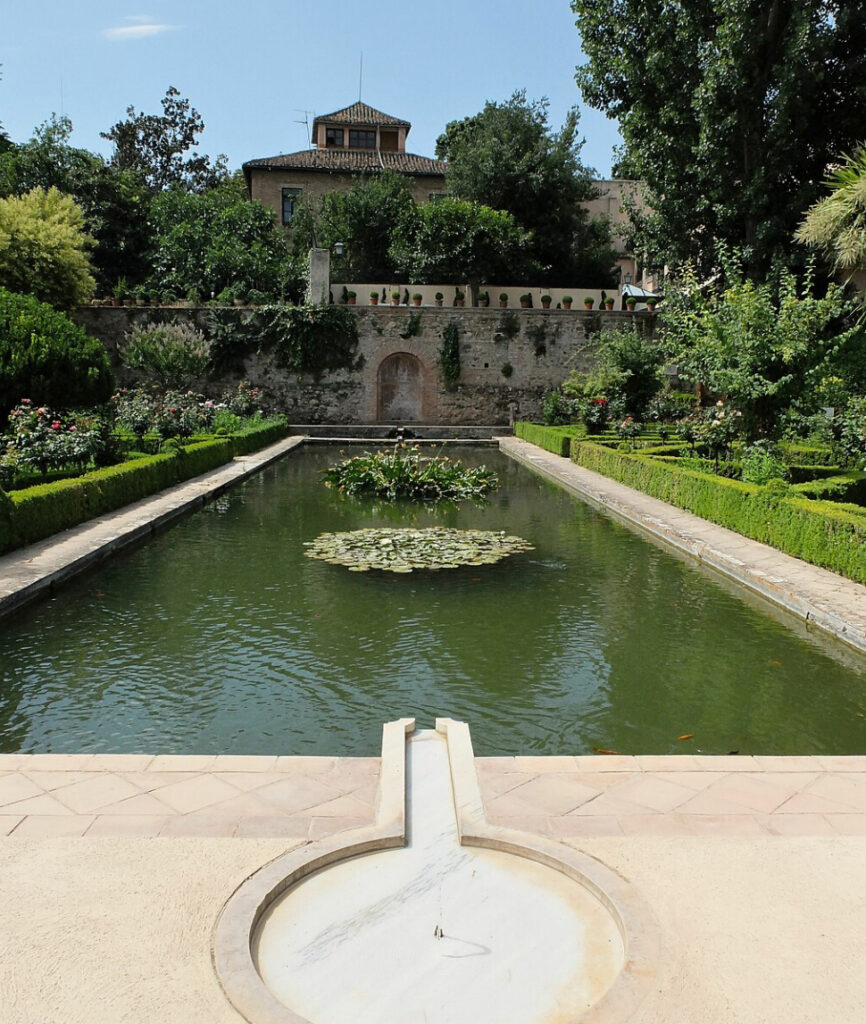
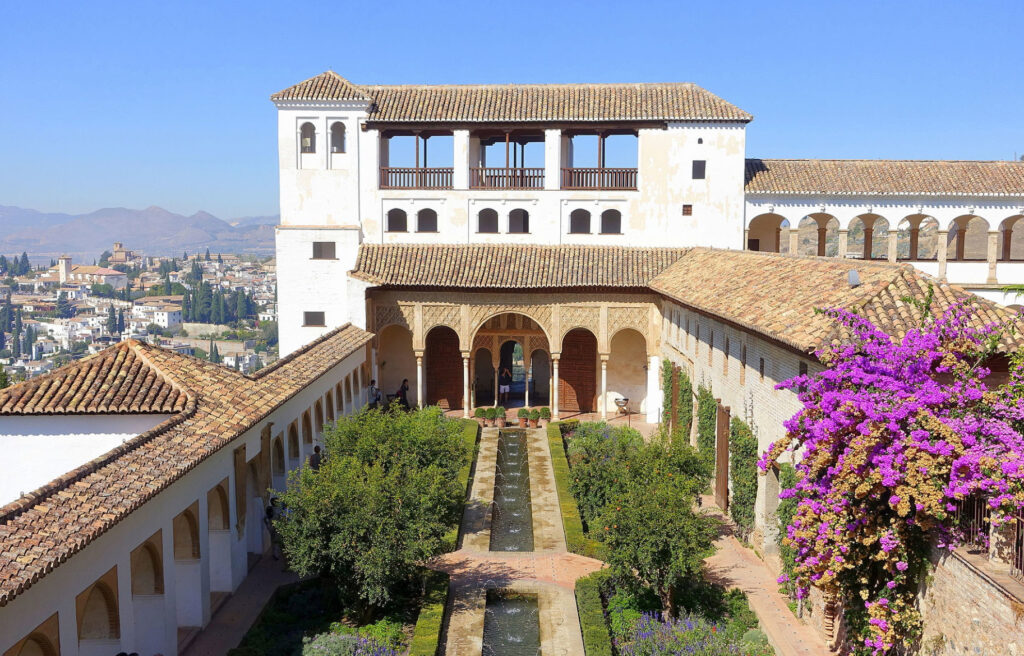
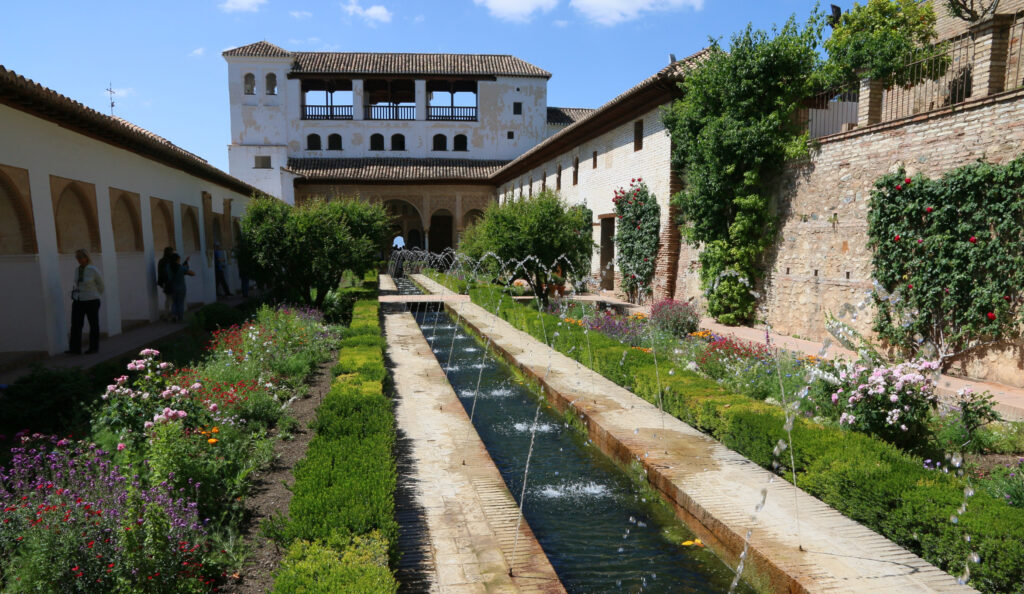
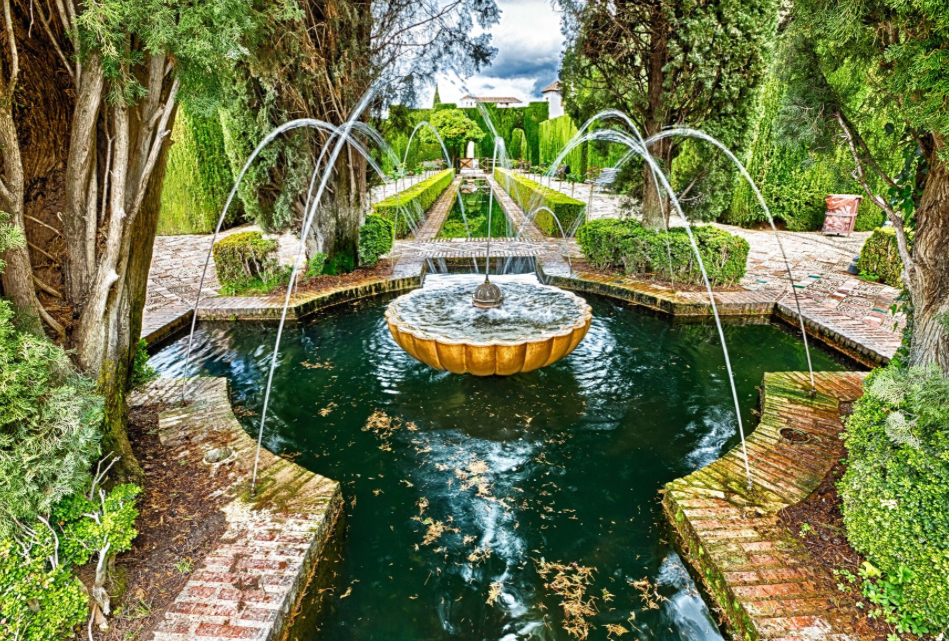
3. Alcazaba (Fortress)
The oldest part of the Alhambra, serving as a military stronghold.
• Includes towers like the Torre de la Vela, offering panoramic views of Granada.
• A symbol of defense and strategic importance.
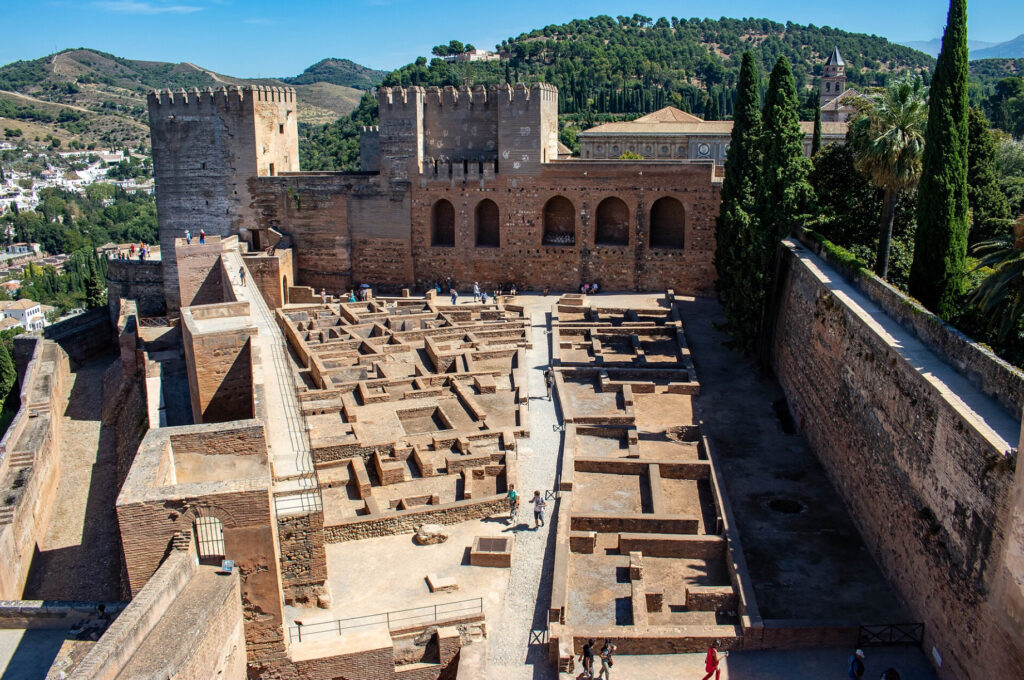
4. Palace of Charles V
A Renaissance-style palace built in 1527 after the Christian conquest.
• Features a circular courtyard inside a square structure, reflecting classical Roman influences.
• Contrasts sharply with the Islamic designs of the Nasrid palaces.
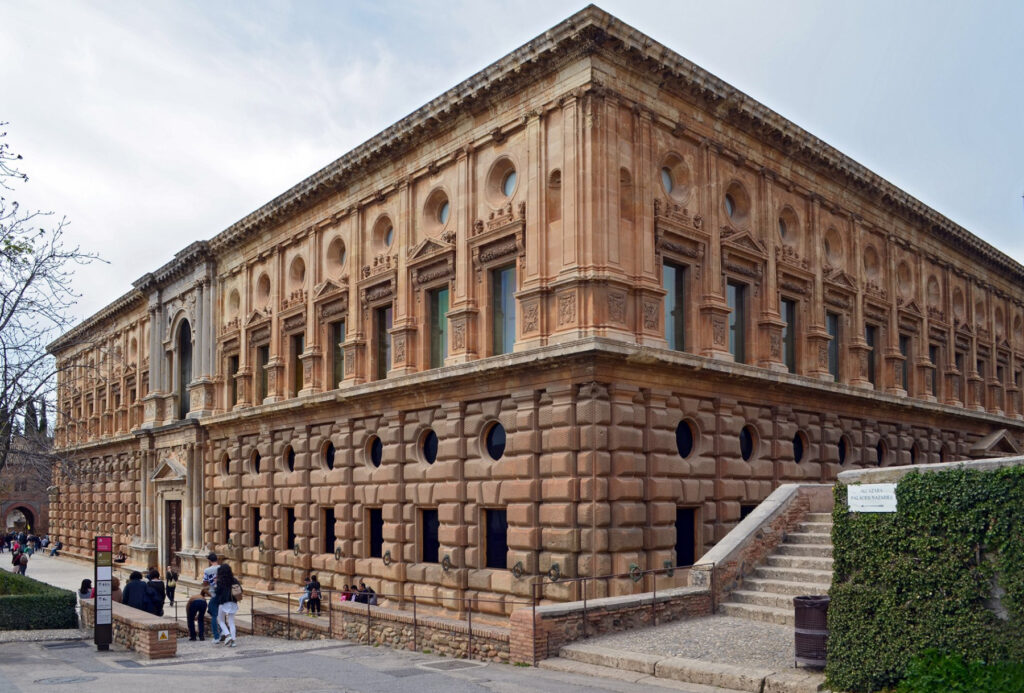
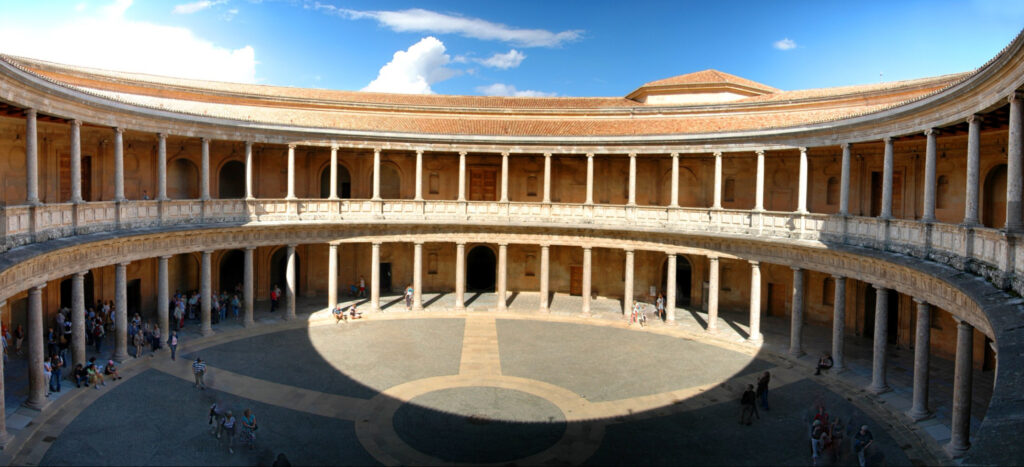
5. Ornamental Features
• Muqarnas (Stalactite Vaults) – Decorative niches creating honeycomb-like patterns, seen in the Hall of the Two Sisters and the Hall of the Abencerrajes.
• Arabesques and Geometric Patterns – Found on walls, ceilings, and columns, representing infinite beauty and divine order.
• Water Features – Reflecting pools and fountains not only enhanced aesthetics but also cooled the environment.
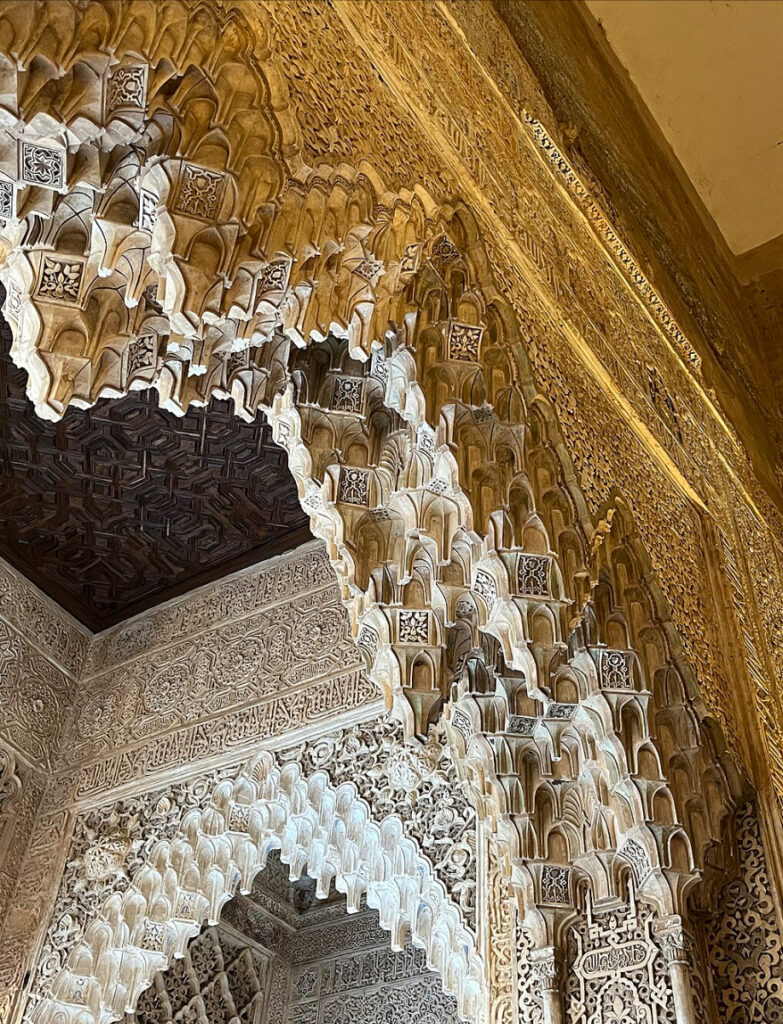
• Calligraphy – Qur’anic verses and poems celebrating the power of rulers and the beauty of creation adorn the walls.
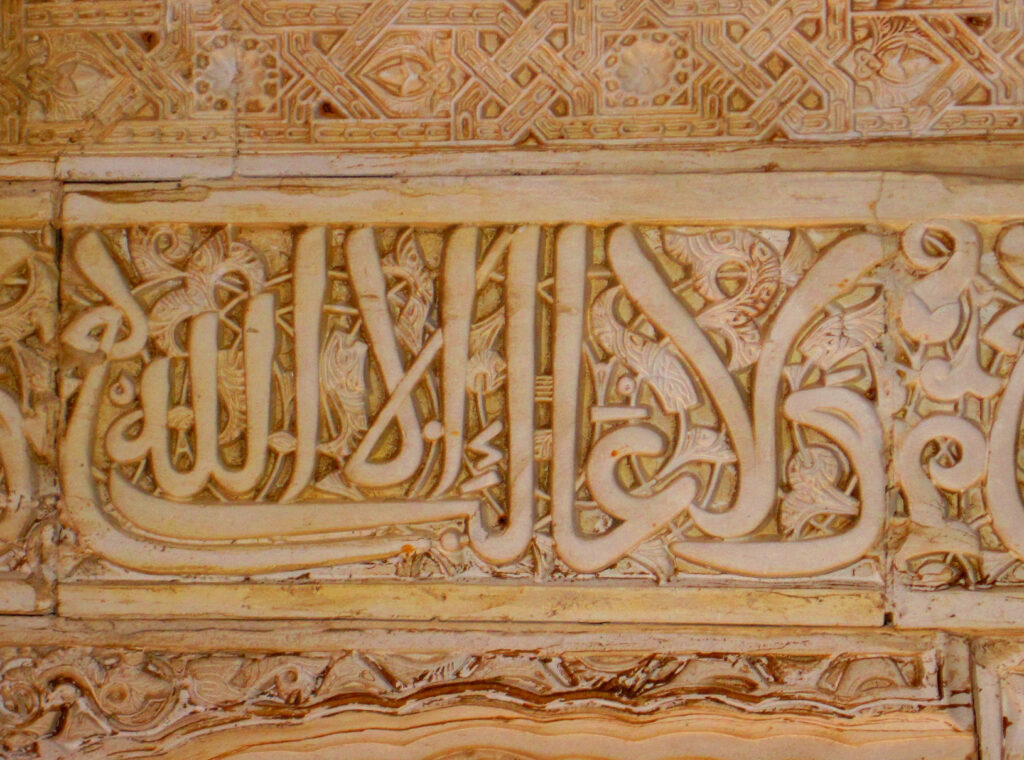
Highlights
1. Court of the Lions
• Iconic courtyard with 12 marble lions supporting a central fountain.
• Represents strength, justice, and paradise, with water channels symbolizing the rivers of Eden.
2. Hall of the Ambassadors
• The largest hall in the complex, used for royal receptions.
• Features an intricately carved wooden dome resembling the heavens, symbolizing the power of the Sultan.
3. Hall of the Abencerrajes
• Known for its stunning muqarnas ceiling and mysterious legends about the massacre of the Abencerraje knights.
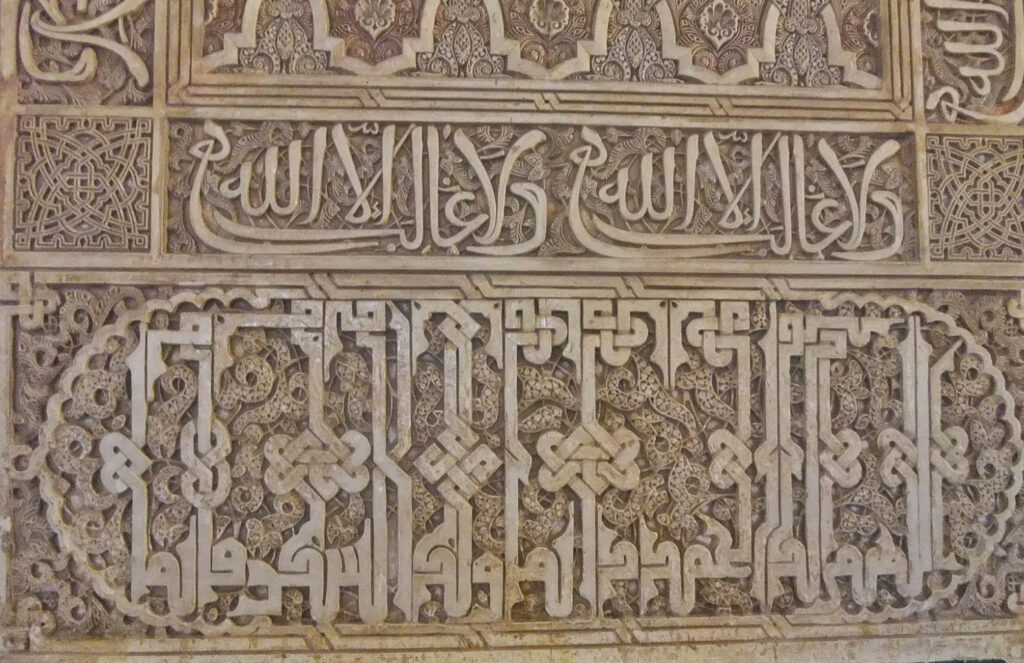
4. Generalife’s Patio de la Acequia (Court of the Water Channel)
• A tranquil garden space framed by fountains and flowerbeds, evoking a sense of paradise.
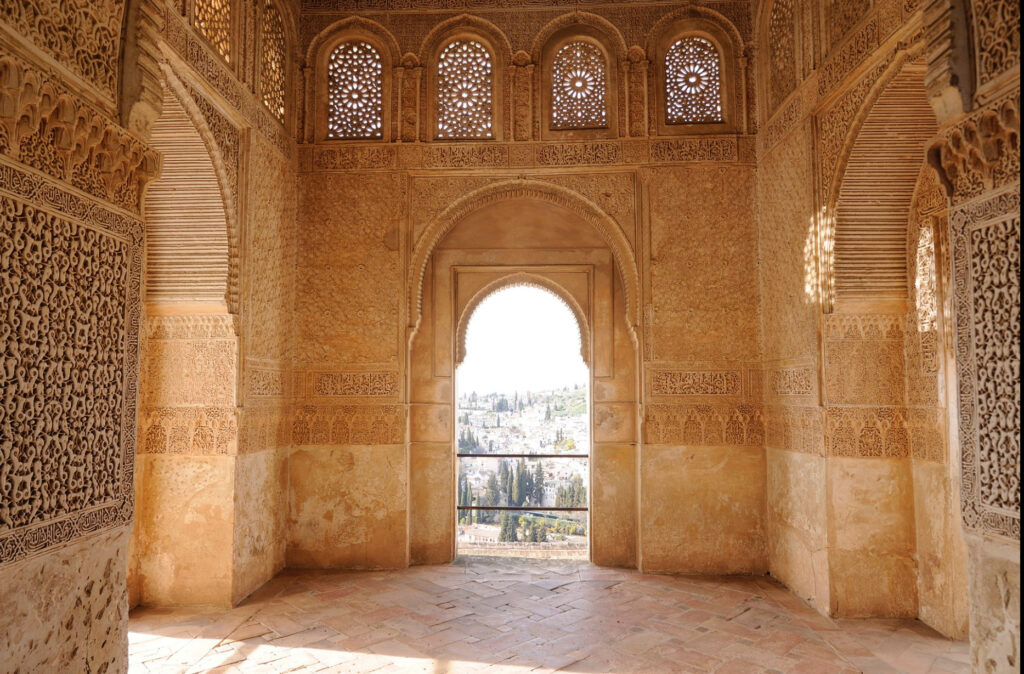
5. Torre de la Vela (Watchtower)
• Offers sweeping views of Granada, the Sierra Nevada, and the city’s historic quarters.
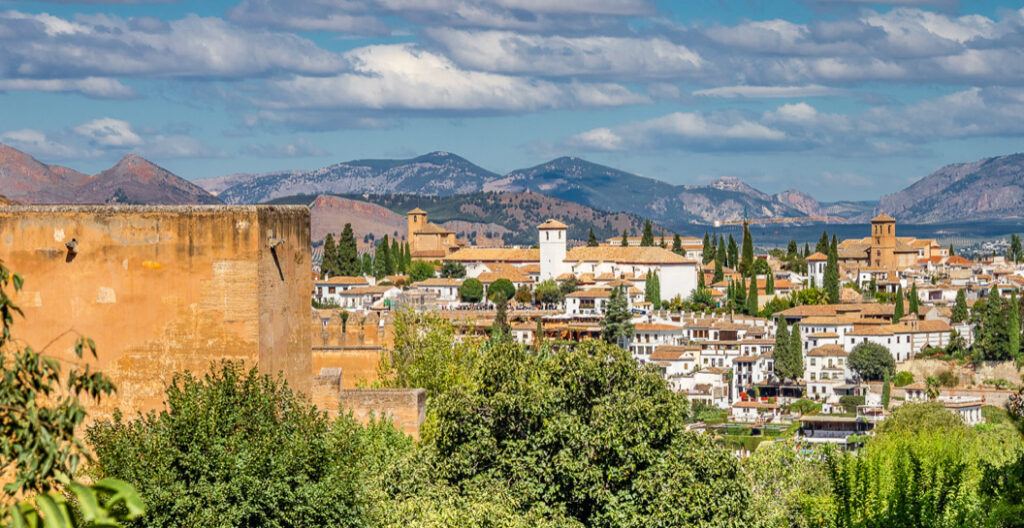
Conclusion
The Alhambra’s blend of Islamic and Renaissance influences, along with its intricate artistry, makes it a unique architectural marvel. Its geometric patterns, poetic inscriptions, and water features create a harmonious space that reflects both cultural sophistication and spiritual symbolism.
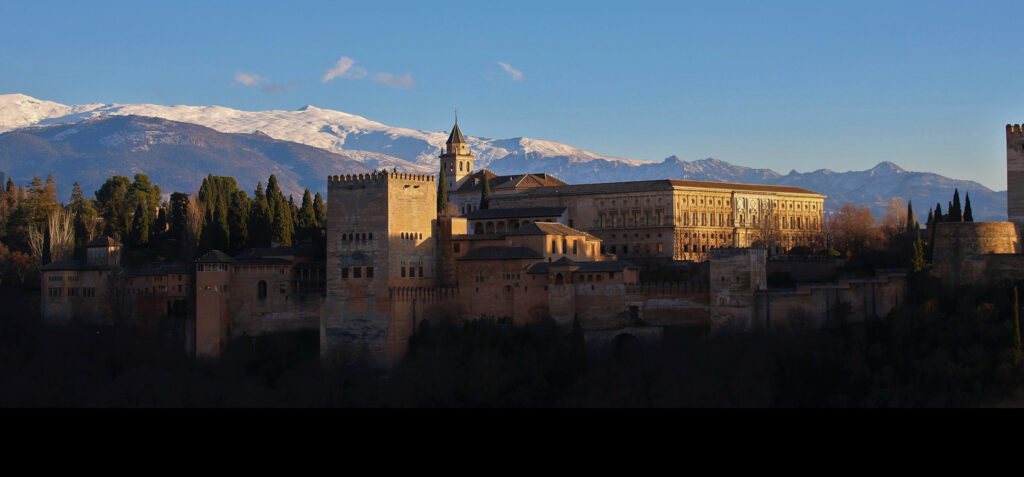
Mathematical Significance of the Alhambra Tiles
mathematical brilliance of the tile patterns in the Alhambra, particularly their use of symmetry and tessellation.
• Wallpaper Groups: In mathematics, wallpaper groups are classifications of two-dimensional patterns based on their symmetry properties. These symmetries include translations, rotations, reflections, and glide reflections—transformations that repeat patterns infinitely without overlaps or gaps.
• Seventeen Groups: Mathematicians have proven that there are exactly 17 distinct wallpaper groups that describe all possible ways to create symmetrical patterns on a flat surface. The Alhambra’s tilework remarkably showcases nearly all—or perhaps all—of these groups, demonstrating a complete mastery of geometric principles.
• Cultural Context: Islamic art, particularly during the Nasrid dynasty, avoided representations of humans or animals due to religious beliefs. Instead, artists focused on geometric patterns, using mathematical precision to symbolize divine harmony and infinity, reflecting the perfection of God’s creation.
Unique Accomplishment in World Architecture:
• Art Meets Mathematics: The Alhambra exemplifies how art and science can merge seamlessly, elevating architecture to a symbolic representation of order and beauty.
• Cultural Legacy: This mathematical sophistication reflects the intellectual achievements of Islamic civilization, where geometry and symmetry were studied not just as art but as metaphysical concepts reflecting divine order.
• Global Influence: The Alhambra’s patterns have inspired artists, mathematicians, and architects worldwide, demonstrating the timeless appeal of mathematical design.
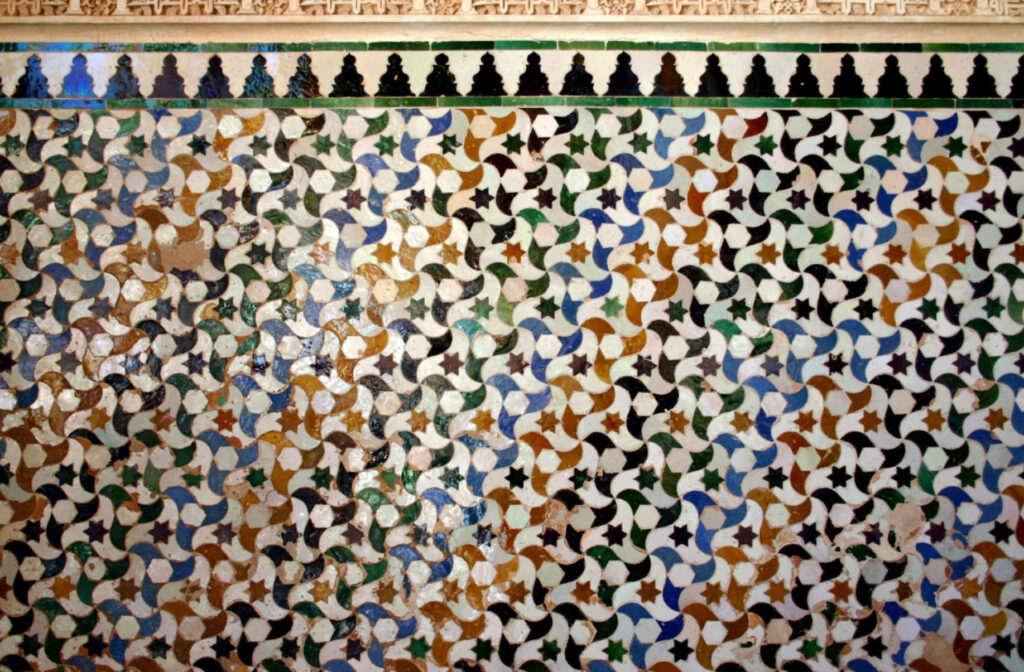
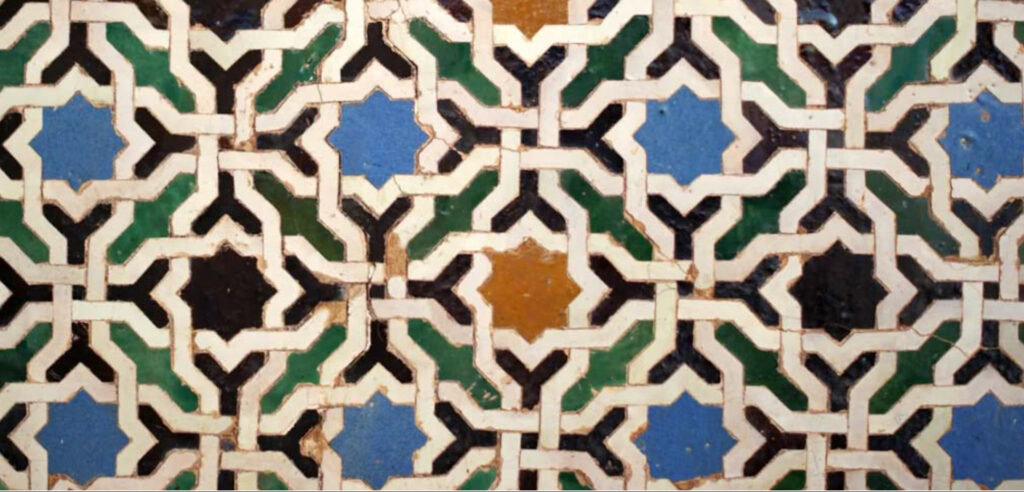
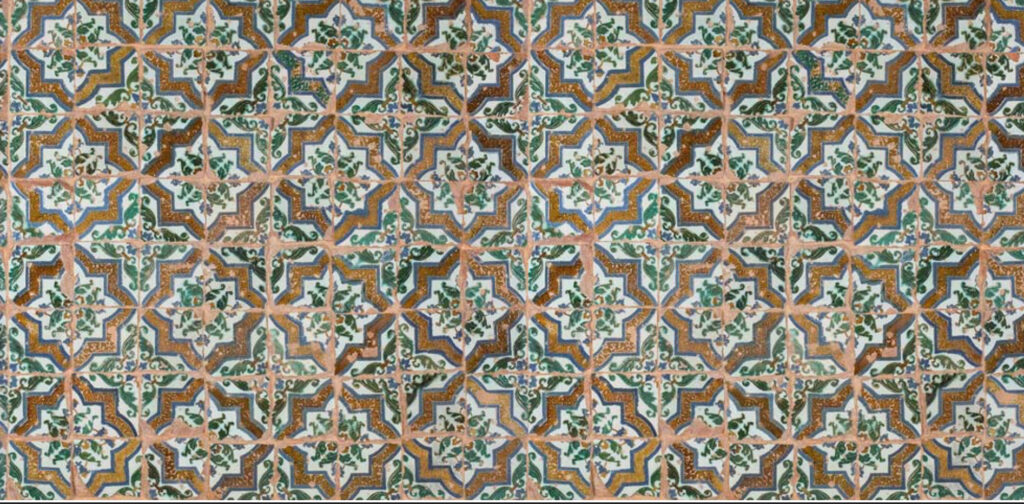

One-Day Visiting Route for the Alhambra
This route provides a logical and informative sequence to explore the Alhambra in one day, ensuring you see its most iconic areas while appreciating its historical and architectural highlights.
Morning (Start: 8:30 AM – 9:00 AM)
1. Nasrid Palaces (Allow 1.5–2 hours)
• Start early with the Nasrid Palaces, as timed entry tickets regulate access.
• Highlights:
• Mexuar Hall – The oldest part, used for administrative purposes.
• Comares Palace – Visit the Hall of the Ambassadors, with its intricate wooden ceiling representing the heavens.
• Palace of the Lions – Marvel at the famous Court of the Lions and the symbolic lion fountain.
• Hall of the Two Sisters – Admire the breathtaking muqarnas ceiling and poetic inscriptions.
• Tip: Book tickets in advance to secure the first morning slot for a less crowded experience.
Mid-Morning (10:30 AM)
2. The Alcazaba (Fortress) (Allow 45 minutes)
• Explore the oldest section of the Alhambra, a defensive fortress with watchtowers and ramparts.
• Highlights:
• Climb the Torre de la Vela for panoramic views of Granada and the Sierra Nevada mountains.
• Walk along the ramparts to imagine the life of soldiers guarding the palace.
Late Morning (11:30 AM)
3. Palace of Charles V (Allow 30–45 minutes)
• Contrast the Islamic elegance of the Nasrid Palaces with this Renaissance-style structure.
• Highlights:
• Admire the circular courtyard inside the square design.
• Visit the Alhambra Museum, showcasing artifacts from the Nasrid period.
• Explore the Fine Arts Museum with Spanish paintings and sculptures.
Lunch Break (1:00 PM)
• Recommendation: Relax and have lunch at Parador de Granada, located within the Alhambra grounds, offering traditional Andalusian cuisine with views of the Generalife gardens.
• Alternative: Quick bites at nearby cafés or kiosks.
Afternoon (2:30 PM)
4. Generalife Gardens (Allow 1–1.5 hours)
• Wander through this summer palace and gardens, designed as a retreat for Nasrid rulers.
• Highlights:
• Patio de la Acequia (Court of the Water Channel) – Central water features symbolizing paradise.
• Upper Gardens – Offers beautiful views of the Alhambra complex.
• Pavilion and terraces – Experience peace and tranquility in the shaded walkways.
Late Afternoon (4:00 PM)
5. Exploration and Reflection (Optional: 45 minutes)
• Revisit any areas you loved earlier or explore smaller sections like the Baths of the Mosque and El Partal Gardens, which provide great views of the Alhambra’s towers.
• Relax in shaded spots while reflecting on the palace’s beauty.
Evening (Optional Sunset View at 5:30 PM – 6:00 PM)
• Mirador de San Nicolás: After leaving the Alhambra, head to this lookout point in the Albaicín neighborhood for stunning sunset views of the Alhambra glowing against the Sierra Nevada.
Tips for Visiting
1. Tickets: Book tickets online in advance, as entries to the Nasrid Palaces are time-restricted.
2. Comfortable Shoes: Expect a lot of walking over uneven surfaces.
3. Guided Tour: Consider an audio guide or a guided tour for deeper insights.
4. Early Start: Arrive early to avoid crowds, especially in the Nasrid Palaces.
